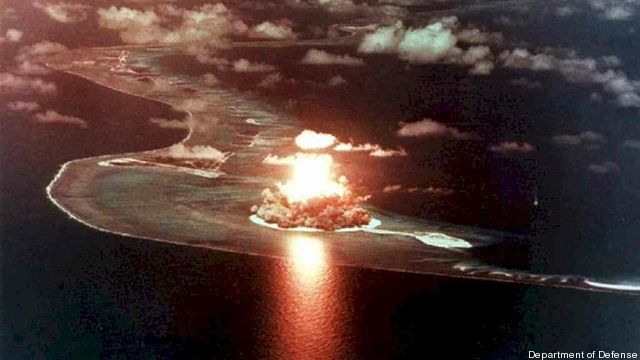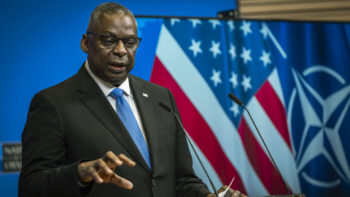
WASHINGTON: Nuclear weapons are expensive. So are the bombers, missiles, and submarines used to deliver them. But in the context of total defense spending, budget guru Todd Harrison argues, they’re a relatively affordable — and strategically critical — part of our armed forces.
Even a package of radical cuts to nuclear forces — reducing submarines and ICBMs and largely eliminating air-dropped weapons — “would save you about $20 billion dollars over the next five years,” Harrison said this afternoon, discussing the latest study from the independent Center for Strategic and Budgetary Assessments. For comparison, he said, implementing just one proposal from the Military Compensation and Retirement Modernization Commission — an adjustment to TRICARE health benefits for military dependents and retirees — would save $26 billion over the same period.
The difference over those same five years between what the Pentagon’s budget request says it needs and what the Budget Control Act would allow: $140 billion.
Cuts to nuclear forces would reap larger savings in the 2020s, Harrison said, $77 billion over that decade. That’s because several existing systems are aging out of service and need replacement in that same period: the Navy Ohio-class ballistic missile submarine with the Ohio Replacement Program; the Air Force B-52 bomber with the Long-Range Strike Bomber; the Air-Launched Cruise Missile (ALCM) with the Long-Range Stand-Off (LRSO) missile; and, towards the end of the decade, the Minuteman III ICBM with the Ground-Based Strategic Deterrent (GDSB).
What’s more, multiple conventional weapons programs — above all the F-35 fighter — will be entering full production at the same time. So the 2020s are looking like a painful crunch time for the defense budget.
“We’re not going to be able to do all those conventional programs at the same time,” never mind the nuclear ones, Harrison said, “so we’ve got to prioritize.”
With a resurgent Russia and a rising China, nuclear deterrence ought to be at the top of that list, many senior defense officials argue. “Nuclear modernization is affordable even under current budget constraints if it remains a priority,” Harrison said. “Are they unaffordable? I don’t think so.”
Even if the Budget Control Act caps are extended indefinitely, while planned nuclear modernization proceeds, “we would peak at just under 5 percent of he total national defense budget going for our nuclear forces,” said Harrison. “DoD should be able to protect 5 percent of its budget even given the BCA….To put that in perspective, we spend 10 percent of the budget on healthcare.”
It’s worth noting that Harrison’s numbers diverge from those of other experts. Official Defense Department figures count 100 percent of long-range bombers as “strategic forces,” for example, even those aircraft that aren’t nuclear-capable. Of course, strategic and nuclear aren’t necessarily the same. Harrison includes just 25 percent of the bomber forces’ operating costs and 10 percent of the cost to build the new Long-Range Strike Bomber, pointing out that most bombers are assigned conventional missions.
Likewise, many estimators count DSP and SBIRS missile-warning satellites as part of the nuclear force. Harrison argues we’d still need them for missile defense even if we had no nuclear weapons and does not include their costs in his analysis. On the other hand, Harrison’s estimates include Energy Department nuclear weapons programs that, by definition, aren’t included in Defense Department estimates.
“Nukes are affordable” is probably not a popular position on the eve of the 70th anniversary of Hiroshima, during the administration of a president who’s called for “global zero,” the elimination of all nuclear weapons. But Harrison sheds important light on a strategic debate we can’t avoid.
Lockheed wins competition to build next-gen interceptor
The Missile Defense Agency recently accelerated plans to pick a winning vendor, a decision previously planned for next year.


























